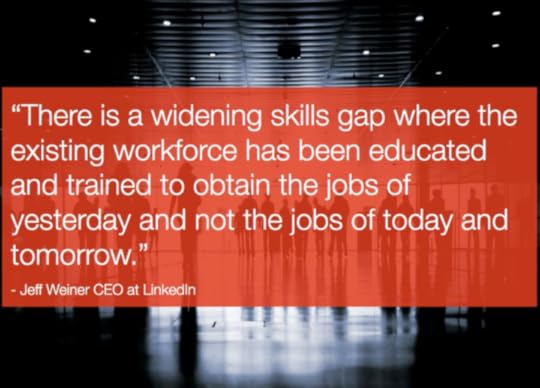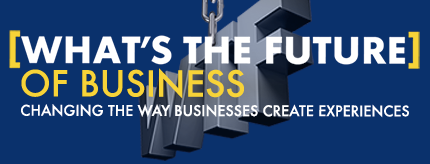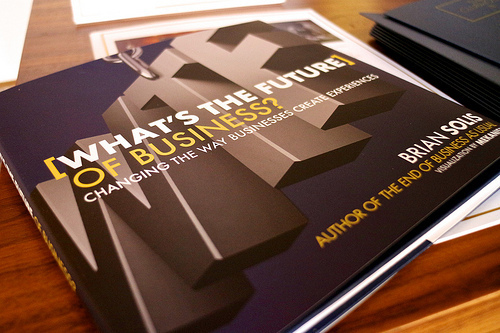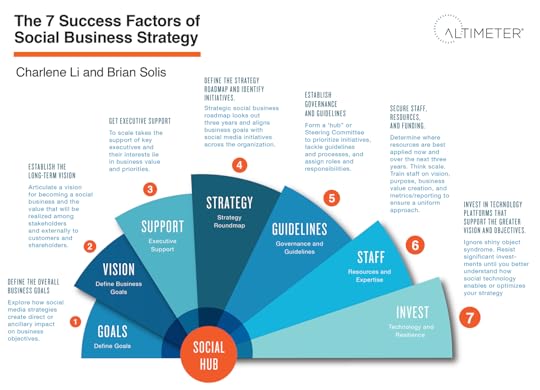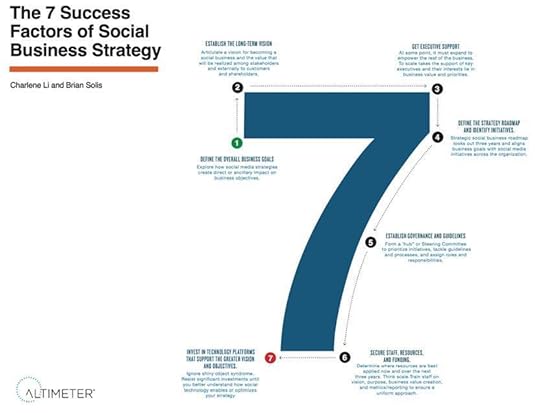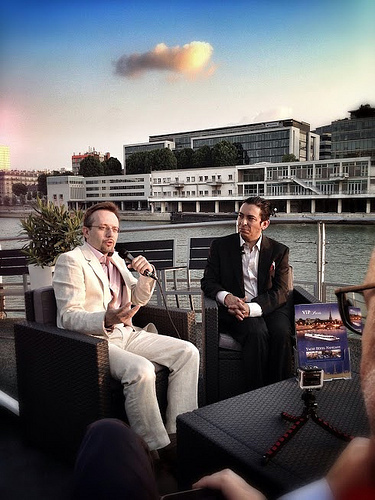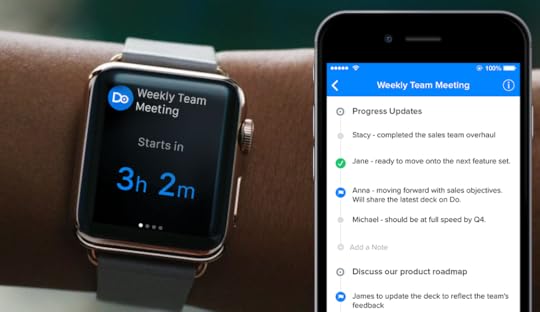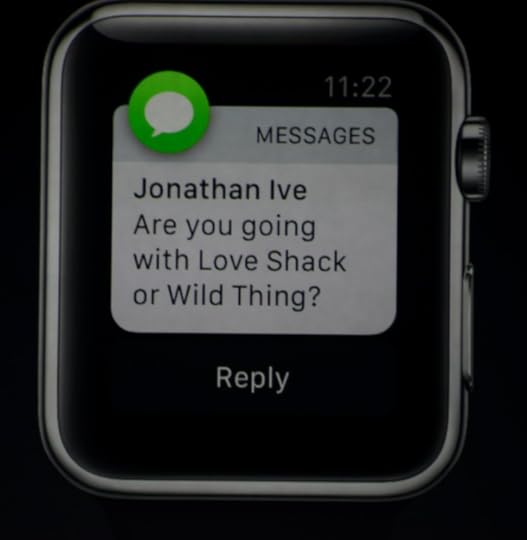Brian Solis's Blog, page 102
May 21, 2015
The Expertise Gap is Real and Employees Need Your Attention Now
The biggest challenge is not in the understanding or expertise associated with new technology. We can learn that. The biggest problem is our inability to recognize that the experience we have today is not the experience we need going forward.
A notable separation exists between the expertise people have or are learning and the jobs companies need to hire for in an increasingly digital economy. This means that current employees possess expertise to perform jobs that are losing prominence in business while new jobs openings (or the need to create them) are becoming increasingly difficult to fill.
This is a problem to say the least. The question is, why isn’t there a greater sense of urgency around this looming threat? Perhaps it’s because this dilemma affects more than HR, it affects the entire business down to its fiefdoms, silos, job security, and everyday politics.
LinkedIn CEO Jeff Weiner recently observed, “There is a widening skills gap where the existing workforce has been educated and trained to obtain the jobs of yesterday and not the jobs of today and tomorrow.”
Jeff Weiner would know. He runs a company that houses one of the world’s most up-to-date indicators on the future of the job market. See, LinkedIn isn’t just a social network where professionals host digital resumes and connect with colleagues, prospects and partners. LinkedIn hosts millions of companies that actively list roles they need to fill as well as people who willingly share their experience and ambitions.
Believe it or not, experts debate whether or not the skills gap is actually a real thing. I guess it’s not unlike global warming. If we don’t see it then it must not exist right?
Last year though, 35% of 38,000 employers reported difficulty filling jobs due to lack of available talent; in the U.S., 39% of employers did according to an article in the Harvard Business Review by James Bessen, an economist at Boston University School of Law.
What’s at the heart of the problem?
So.many.things.
First, there is the reality that people are performing jobs that support yesterday’s business models and objectives. To compete for the future requires that leadership establish a tangible and long-term vision for the new world and assess strengths and weaknesses of its workforce to prioritize strategies and investments in human capital.
I once worked with a popular commercial and consumer insurance brand that celebrated a culture of never firing employees. While this created a unique family-like bond that once served as a competitive advantage, it is the company’s own culture that is now serving as its anchor. It just seems that there’s just no sense of urgency or meaningful incentive for individuals or teams to learn something new.
Second, there are a growing number of jobs where humans need not apply. Automation is nothing new nor is it bad. Automation though is inevitable. However, with digital intelligence and capabilities comes the need for people to learn the skills and capabilities that keep the human workforce performing the jobs that machines cannot do today.
We have been through economic revolutions before, but the robot revolution is different.
Horses aren’t unemployed now because they got lazy as a species, they’re unemployable. There’s little work a horse can do that do that pays for its housing and hay.
And many bright, perfectly capable humans will find themselves the new horse: unemployable through no fault of their own.
That’s one part of a multifaceted puzzle however.
Third, an incredible generation gap exists between Matures, Baby Boomers, Generation X and Millennials. In a sense, it’s three against one as Millennials are the first modern workforce to act and think as a collective differently enough to challenge business as usual simply by existing.
They’re the first to possess digital in their DNA whereas the others are inherently analog-first. How they approach work, how they work, how they work with others, is intrinsically different than that of their predecessors. It’s just who they are. Social, mobile, real-time, how they interact in the real world is not how they interact, or care to, in the workplace. Believe it or not, some of the technologies that support big business today was invented before the browser. And, the browser and the entire internet experience has been completely modified in a short while because of always-on mobile apps.
That’s just the beginning of understanding the impact of Millennials on the workforce. It is their aspirations, what they value and their vision for management and advancement that is challenging the very foundation of traditional work. It’s a problem that growing faster than many realize.
PwC, a global company that focuses on audit and assurance, tax and consulting services, published a report that revealed 80% of the workforce of the PwC firms will be Millennials by 2016. Eighty percent!
We’ve only reviewed a few of the sources causing the expertise gap and I’ve run out of words for this article. The time is now to counter this movement by thinking about what to do when large sections of the population are unemployable before it happens.
Sometimes, legacy holds us back for the sake of legacy not progression. There’s a quote I can’t help but think of when considering the existing expertise gap at work. As Viktor E. Frankl once wrote, “It isn’t the past which holds us back, it’s the future; and how we undermine it, today.”
This isn’t an HR issue. This is a problem and opportunity that rises all the way to the leadership organization requiring leaders to lead as the expertise gap cannot be solved with mere management tactics.
Training and education is one way to address this.
Support, nurturing and rewards will also help.
But nothing can begin without first accepting that a problem exists, understanding the extent of the problem, and putting into effect digital transformation strategies that close the gap now and also sets the stage to compete for the future.
Connect with me… Twitter | LinkedIn | Facebook | Youtube | Instagram | Pinterest

May 13, 2015
Working for More Than a Living
Special guest post by Tom Rath, author of Are You Fully Charged?: The 3 Keys to Energizing Your Work and Life
The concept of bringing people together in groups, tribes, or organizations is based on the fundamental premise that human beings can do more collectively than they can in isolation. Hundreds of years ago, people banded together for the sake of sharing food and shelter and keeping their family safe. The basic assumption was that the association gained by joining a group would benefit individuals and their loved ones. As a species, humans are better off together than they are apart. Simple enough.
This is why I was taken aback by research Gallup conducted on this topic. When workers across the United States were asked whether their lives were better off because of the organization they worked for, a mere 12 percent claimed that their lives were significantly better. The vast majority of employees felt their company was a detriment to their overall health and well-being.
How did this relationship between individuals and organizations go so wrong? One catalyst for this change was the Industrial Revolution, when people almost literally became cogs in big machines and assembly lines. The premise was that an employee would work at a routine task for a fixed number of hours in exchange for a set amount of hourly pay. While this led to a great deal of automation, innovation, and productivity growth, it also resulted in unintended side effects that linger today.
These transactional relationships made it easy for companies to work someone to the point of burnout, knowing they could hire the next person in line. Everything from organizational hierarchies to compensation structures sent a simple message: You are replaceable. At almost every turn, classic economics ruled. No one was even asking whether people’s lives were better because they were part of a particular organization.
When I entered the workforce in the 1990s, the general expectation was not much different. A company offered you a job performing a specific task. If you completed that task, you earned a wage. Some jobs also provided benefits like health insurance, retirement funds, or other incentives to retain employees. A few companies even asked employees if they were satisfied with their jobs.
Near the start of the 21st century, some companies began asking if their employees were emotionally engaged (not just satisfied) with the work they were doing each day. These inquiries created a major shift; managers and leaders were finally paying attention to whether people were not just showing up but also giving all of their “discretionary effort” to the organization.
Employers are now quite savvy about whether you are engaged or disengaged while you are on the job. They know what the organization is getting out of you. However, in most cases, you do not know how, or even if, your life is improving because you are part of that organization.
This relationship needs to change for the foundational compact between individuals and organizations to succeed. The future of work lies in redefining it as doing something that makes a difference each day. Work is a purpose, not a place. Work is about productively applying your talent. Work is about making your life, and the lives of other people, stronger as a product of your efforts.
Portions of this post were adapted from Are You Fully Charged?, by Tom Rath. Silicon Guild, May 2015
Photo Credit: Shutterstock

May 5, 2015
When You Share Experiences You Help Strangers Make Decisions

Whether you realize it or not, when you share an experience you have, whether it’s through a post, review, video, image, rant, praise, etc., it helps a stranger make a decision about what to do next.
Customers aren’t following the customer journey you designed because they’re too busy hacking it. No matter how much journey work you do, no matter how creative your marketing, no matter how responsive your website is, no matter how much technology you invest in, customers trust the experiences of others over your words aka branding and the path you’ve laid out for them.
Businesses today must invest in experiences because that’s what people want. Customers aren’t looking for products, transactions, apps, retargetting, or anything that resembles a traditional cluster funnel.
While I was in London touring WTF, I spent time with Gabriella Laine Peters and the LikeMinds team. We shot a short video that packs quite a bit in a few minutes.
Topics covered:
1. The Ultimate Moment of Truth and Shareable Experiences
2. Experience Architecture
3. Experiences are More Important Than Products
4. Digital Darwinism and Survival of the Fitting
5. Technology + Behavior = Relevance and Resilience
6. The Importance of UX and CX
7. #WDYSF – What Do You Stand For?
8. Brand 2.0
I hope it helps you!
Special thanks to Martin Soler of wihp (World Independent Hotels Promotion), Phil Butler of Pamil Visions and Gabriel Laine-Peters for their help in organizing a launch event for WTF. Also thank you to Benjamin Ellis who shared pictures from the event available on Flickr.
Connect with me… Twitter | LinkedIn | Facebook | Youtube | Instagram | Pinterest

April 30, 2015
Thanks Millennials! The Digital Revolution is Only Just Beginning
Guest post by Maddie Grant (@maddiegrant) author of the new book When Millennials Take Over, exploring the digital mindset and the other three key capacities for recruiting, retaining and engaging Millennials
Think about this: the Millennial generation is the first generation to NEVER know a workplace without the internet. The rest of us remember the time we got our first email address, or that time we were irritated because we weren’t part of the lucky few that were allowed one of the two company email addresses. Some of us might even remember how the fax machine took a bite out of the courier business. But the Millennials don’t remember any of that. The grew up with the internet as part of the definition of normal. It’s normal for them to have any information they want at the tip of their fingers. It’s normal for them to have fast computers and new phones (that are really computers). They expect things to be upgraded and improved all the time–not because they are some kind of “entitled” generation, but because that’s all they’ve ever known.
And just a few years from now, the Millennials will be the largest segment of the workforce. They are the largest generation in the history of the United States, in fact. And as digital natives, they are going to usher in some big changes to how we lead and manage organizations.
This is one of the insights we drew from the research that went into our new book, When Millennials Take Over: Preparing for the Ridiculously Optimistic Future of Business. We identified four key capacities that we found inside organizations with unusually strong organizational cultures that aligned with the approach of the Millennial generation to leadership and management:
- Digital
- Clear
- Fluid, and
- Fast.
We figured digital would be the least surprising of the four, but we like to draw attention to it, because it may not be what you’re thinking. Organizations embracing digital technology is not a new idea, of course, but the bar continues to be raised on this one. Millennials are not only expecting your organization to provide decent equipment and have a respectable presence on social media, they also expect you to be using the right tools for the right purpose. Don’t email when you should be instant messaging. If that clunky content management system becomes frustrating for the team, don’t continue to use it just because you invested two years learning how to use it.
But the technology side is actually just the tip of the iceberg. To create a culture that really attracts the top talent from the millennial generation (and all generations, actually), your organization needs to embrace the digital mindset. In the digital world, the user is king. Everything is customized for the user’s experience, even though all those users want to use different devices on different platforms in different contexts. That’s harder work for the people designing the digital solutions, but it’s easier for the user, and that’s how the world works now. Everyone gets customized solutions now–meaning the middle of your market not just the high rollers–and innovation and improvement is continuous.
So is that how you design your organization and its culture? Look at your office layout. Was it designed with all the employees in mind, or is it really about making the most senior managers happy? The organizations that we found who truly embraced the digital mindset redesigned their office space to meet the needs of everyone, even though that was harder on the organization. They put senior staff (including CEOs) out in the office with everyone, because when the employees have that kind of access they get their work done more effectively. And it’s not just about office space. They do things like rewrite their job descriptions every year based on the unique career development trajectories of their employees. They care more about their employees, and they get surprisingly high levels of engagement and productivity in return.
In the end, being digital is not about catering to the needs of Millennials, or even trying to be more like them. It’s about embracing a trend that is accelerating so fast that we run the risk of falling too far behind to really catch up. It’s about creating organizations that tap into the power of true employee engagement. It’s about creating organizations that actually make innovation happen, rather than just talking about it. But it requires a digital mindset, and that means letting go of a lot of what we’ve been told are “best practices” in management for the last several decades.
Photo Credit: Shutterstock

April 28, 2015
The 7 Success Factors of Social Business Strategy [INFOGRAPHIC]
Over the years, my partner Charlene Li and I authored a series of research papers and also a short book on the evolution of social businesses, from philosophy to strategy to practice. Along the way, we also produced an effective maturity model and infographic that documented the six stages of social business transformation. This work would eventually pave the way toward my focus on digital transformation and innovation today.
Now, after all this time however, I wanted to share the official infographic from our ebook, The 7 Success Factors of Social Business Strategy.
In our work, Charlene I studied the common attributes of businesses that found success in social. More importantly, we learned how doing so helped the business evolve rigid or traditional models to become resilient. Everything came down to seven stepping-stones that set advanced businesses apart from those meandering or experimenting in social today. You don’t need to read our ebook to learn what they are and why they’re important.
A social business is not a marketing strategy or a technology roadmap but rather a way or philosophy of how business could be done differently…in a much more human manner. Let’s start with Altimeter’s definition of a successful Social Business Strategy (SBS). It is one that aligns with the strategic business goals and has alignment and support throughout the organization. Now, let’s walk through the infographic.
The Seven Success Factors of Social Business Strategy
1. Define the overall business goals.
You can’t align your social strategy with your business objectives if you don’t even know what your objectives are.
2. Establish the long-term vision.
If you’re not striving toward the end goal, you’re likely to veer off the path. If you want your team to fully invest in your social strategy — and you need the support of your entire team – you’ll need to communicate your vision with clarity and passion.
3. Ensure executive support.
In the early days you may be able to fly under the radar, but at some point, if you want to truly have an impact on the business, you’ll need the backing and support of key executives.
4. Define the strategy roadmap.
You already know your business objectives and have a clear vision. But how are you going to get there? Plan out your route, what roads you’ll travel, and what roads you’ll avoid.
5. Establish governance and guidelines.
Who is responsible for executing the social strategy? What’s your process of listening and responding to your customers? If you clearly define this process and then stick to it, you’ll spend less tie floating along throughout the social sphere and more time strategizing your social growth.
6. Secure staff, resources, and funding.
In the early stages of social growth, you might outsource your social media campaign to an agency, and that’s fine. But you should also be looking down the road and planning to develop internal resources to take your company to the next level as your social prowess — and your business — grows.
7. Invest in technology platforms that evolve.
Resist the temptation to jump on the latest technology bandwagon before you have a long-term strategic plan in place. Hold off on making significant technology investments until you’re equipped with a sound vision and strategic plan.
Sure, much of this seems commonsensical. But you and I know that common sense is one of the most uncommon things around. And yes, these seven success factors are true for almost any solid strategy. But by following these seven characteristics of success social businesses, you can and will immediately change course from just another brand, social or digital strategist trying to make sense of social media and instead demonstrating the relationship between business objectives, social technology, and the people in between.
It’s not so much about the terminology as much as it’s about your intentions, the expectations of your connected customers and employees, and how you improve connections, conversations, and experiences to grow your business and the value of the brand.
The image is free to use. Download it from flickr or Slideshare.
As a fun aside, here’s one version of the infographic that didn’t make the cut…
Connect with me… Twitter | LinkedIn | Facebook | Youtube | Instagram | Pinterest

April 22, 2015
Becoming a Thought Leader in the Digital Era
Guest post by Dorie Clark (@dorieclark) is a marketing strategist who teaches at Duke University’s Fuqua School of Business. She is the author the new book, Stand Out, which is now available.
It’s getting harder to communicate these days. Of course, the tools and channels are more ubiquitous than ever. We can blog or podcast or share sepia-toned Instagrams or racy Snapchats or funny Vines. But is anyone actually listening? With more noise and clutter than ever before, how can you actually break out of the pack and get noticed for the quality of your ideas?
That was the challenge I tackled when I began to research my new book, Stand Out. I interviewed more than 50 thought leaders in a variety of fields, from business to technology to genomics to urban planning, to discover how they became recognized experts. One piece of the puzzle is obvious to those well-versed in today’s digital media landscape: you have to build a following. No expert, no matter how knowledgeable, is going to make an impact if his or her work stays locked inside the ivory tower. To be a thought leader, you need followers who listen and believe in what you’re doing. Many thinkers aren’t willing to engage, and assume that simply creating their ideas is sufficient. But for those who are willing to dive into the nitty-gritty of giving speeches, writing blog posts and books, and interacting with the media (digital and otherwise), the rewards are vast and the spread of influence is demonstrable.
But perhaps the harder and more mysterious part of the equation is how to come up with breakthrough ideas in the first place. What enabled leading thinkers to see something in a dramatically new way – and is there a strategy that regular professionals can use to spur more innovation in their own lives? It turns out there is. In Stand Out, I describe a number of approaches these experts used. But one of the most interesting – and accessible to just about anyone – is the niche strategy.
Essentially, this means “cornering the market” on a small subsection of your field – instead of becoming a “sports” expert and writing a blog about all things athletic, you focus on cricket, or on sports teams in Milwaukee, or the like. That depth means there’s less competition (ESPN may do a story about cricket periodically, but you’ll be a far better resource if that’s all you focus on), and you can quickly become recognized as the go-to person for that niche. The trick, however, is that you don’t stay there: you expand steadily into adjacent areas, a process made simpler by a psychological phenomenon known as the “halo effect,” in which—because you’re already perceived as good at one thing—people generalize and think you’re brilliant overall.
That means if you’re the authority on Google’s self-driving cars, you may well be called for comment about their interest in space exploration, and eventually about Google in general, and finally about technology in general. And, in a very tactical sense, the connections you make through your initial expertise can help you as you diversify. If you’ve written an op-ed for a newspaper on a given topic, the editor—who now knows you and your writing style—may be more receptive to your pitch on a different theme.
That “niche expansion” strategy worked for political economist Sophal Ear, who used it to build his platform. When he was a baby, his mother fled the Khmer Rouge, the genocidal rulers of Cambodia, and saved her five children. Nearly thirty years later, he decided to study his homeland when he entered a doctoral program at the University of California-Berkeley.
On the surface, choosing to become an expert on Cambodia might not look like a good career move for an aspiring academic. Scholars are evaluated on how many times their work is cited, and compared with the intense geopolitical interest in China or India, Cambodia is an afterthought. But, he said, “I’d rather do what I’m passionate about.” And, critically, he found ways to connect his deep knowledge of Cambodia to topics that did generate a great deal of interest, and when opportunities to pivot came along, he took them.
His dissertation focused on foreign aid – the “official” subject of his expertise – but he also became a sought-after expert on avian flu due to his knowledge of Asian livestock, and he’s given a popular TED talk about criminal tribunals and justice, stemming from his family’s experience with the Khmer Rouge. “I’m not the kind of professor who stays in my lane when it comes to research,” he says. “One door is Cambodia and it leads to all kinds of possibilities.”
If you’re strategic, like Ear, you can leverage your niche expertise into a broader role as a thought leader. The secret is thinking through related areas where you can add value. He wasn’t moving from Cambodian politics into football or Hollywood movies. Instead, he leveraged his core knowledge and expanded steadily into adjacent fields, where the connection made sense. Over time, as your expertise and reputation in those areas grow, you can move even further afield.
In a world where everyone is clamoring for attention, it’s increasingly essential to stand out. We need think strategically about how to become recognized for deep expertise in a given niche (creating content, taking on leadership roles, etc.), and then expand into nearby areas from there. Once you’ve become a trusted source in one realm, it’s far easier to leverage that toehold and become a recognized thought leader across the board.
Photo Credit: Shutterstock

April 20, 2015
When Hospitality Becomes an Art, It Loses Its Very Soul
The title is credited to Max Beerbohm, English essayist, parodist, and caricaturist best known today for his 1911 novel Zuleika Dobson. Taken from his 1918 work, Hosts and Guests, I interpret his work for a new era of hospitality. We live in a connected society now and as such, guests and the experiences they have and share, form the foundation of marketing and service. If we try to scale experiences for the sake of doing so, we miss the essence of true engagement. Instead, we connect with guests, customers, at an emotional level.
Although way overdue, I’m finally sharing highlights from my tour in Paris and London for the release of What’s the Future of Business. It was all pretty exciting and to be honest, I miss it now that I’m not running from plane to plane and country to country. It was quite beautiful and the new friends I met should know that I already miss them and look forward to doing this again for my next book!
While in Paris, I was invited by WIHP and Pamil Visions to talk about the future of travel, hospitality and hotel marketing. The WIHP and Pamil team arranged for a floating event aboard the VIP Paris Yacht Hotel on the Seine. It was pretty epic and I was surprised and delighted at the number of French marketing leaders who joined.
Shortly after the networking and brief presentation, I joined my friend (and event host) Martin Soler on camera to address the state and future of hospitality experiences. The result was a series of four short videos that regardless of your industry, can help you rethink everything from products to marketing to sales and service to loyalty.
Merci!
Part One
Martin and I tackle the question, “If you can give 3 things hotels need to do to adapt, what would they be?”
I’d share, but then you might not watch the video. 
Part Two
Here, we discuss why hotels need to integrate new technology into their DNA, not as a reactive approach but designing their hotel using the advances in technology.
Part Three
Here, Martin and I talk about the future of technology and the need for digital anthropology in business.
Part Four
We’re aboard a yacht on the Seine right? Instead of enjoying the views, we continued the conversation. In this final installment, Martin and I set out to answer key questions for hotel marketers looking to understand and engage the digital customer.
How does Generation-C (Connected) affect the hotel industry?
If reviews aren’t everything for Generation-C, then what is?
How do hotels and hoteliers accept or not Generation-C?
How can they predict and improve their marketing and hotel experience in the future?
See some of pictures from the event on flickr.
For more information on hotel marketing trends visit: http://www.wihphotels.com/mag/
Connect with me… Twitter | LinkedIn | Facebook | Youtube | Instagram | Pinterest

April 15, 2015
How Marketers Can Thrive in an Era of Digital Darwinism
While in London promoting What’s the Future of Business (WTF): Changing the Way Businesses Create Experiences, I spent some time with the folks who produce The Digital Marketing Show.
In this short video, I share the rise of Generation C and how an era of connected consumerism created the perfect storm for digital Darwinism to accelerate. We also discuss how the future of marketing takes more than technology, it takes a philosophical shift to create meaningful and shareable experiences.
It’s short (3 minutes) and hopefully helpful…
Topic 1: The definition of Generation C and the cross generational market of connected consumers.
Topic 2: How mainstream marketers can survive in a digital Darwinism era?
Brian appears at 0:47
I want to say thank you to Martin Soler of wihp (World Independent Hotels Promotion), Phil Butler of Pamil Visions and Gabriel Laine-Peters for their help in organizing this event. Also thank you to Benjamin Ellis who shared pictures from the event available on Flickr.
Connect with me… Twitter | LinkedIn | Facebook | Youtube | Instagram | Pinterest

April 12, 2015
Habits are the Invisible Architecture of Everyday Life
Guest post by Gretchen Rubin (@gretchenrubin), one of the most thought-provoking writers on habits and happiness. Her new book, Better than Before, is about how we change our habits.
Habits are the invisible architecture of everyday life. Research shows that each day, we repeat about 40 percent of our behavior, so our habits shape our existence, and our future.
If our habits work for us, we’re far more likely to be happy, healthy, and productive—and if our habits don’t work for us, we’ll find it tougher.
So if we want to change our lives, changing our habits is a great place to start. But that observation just raises another question: Okay, how do we change our habits?
Many experts offer a one-size-fits-all solution. Do it first thing in the morning. Do it for thirty days. Start small. Give yourself a weekly cheat day.
It’s tempting to look for a magic, universal answer—but as we all know from tough experience, no magic answer exists.
In my research for Better Than Before: Mastering the Habits of Our Everyday Lives, I uncovered a surprising truth that—really—isn’t much of a surprise: We each must cultivate the habits that work for us.
Some people do better when they start small; others when they start big. Some need to be held accountable; some defy accountability. Some like to work in quiet, spare environments; others thrive amid bustle and abundance. There’s no one right answer.
Also, it’s easy to expect that by copying the habits of productive, creative people, we’ll win similar success. What did Albert Einstein do?
But the fact is, everyone’s different.
Some productive, creative people have the habit of getting an early start (like Haruki Murakami) or working late (like Tom Stoppard); of living a life of quiet predictability (like Charles Darwin) or of boozy revelry (like Toulouse-Lautrec); of procrastinating endlessly (like William James) or working regular hours (like Anthony Trollope); of working in silence (like Gustav Mahler) or amid a bustle of activity (like Jane Austen); of drinking a lot of alcohol (like Friedrich Schiller) or drinking a lot of coffee (like Kierkegaard); of producing work for many hours a day (like H. L. Mencken) or for just thirty minutes a day (like Gertrude Stein).
We can’t make ourselves more creative and productive by copying other people’s habits, even the habits of geniuses; we must know our own nature, and what habits serve us best.
And once we identify those habits, we must make great effort to maintain them, even if others tell us we’re doing it “wrong.” Getting up early to exercise may sound great, but if you can barely make it to work by 10:00 am, you’re not going to form the habit of an 8:00 am run. Having a cheat day may work for a Moderator, but I’m an Abstainer—which means that I find it much easier to resist a strong temptation by abstaining altogether.
Now, when it comes to understanding our habit nature, it’s very helpful to know where we fall in the “Four Tendencies” framework.
In a nutshell, this framework distinguishes how you tend to respond to expectations: outer expectations (a deadline, a “request” from a sweetheart) and inner expectations (practice guitar, get more sleep).
Your response to expectations may sound obscure, but it turns out to be very, very important.
Upholders respond readily to outer and inner expectations (I’m an Upholder, 100%)
Questioners question all expectations; they’ll meet an expectation if they think it makes sense–essentially, they make all expectations into inner expectations.
Obligers meet outer expectations, but struggle to meet expectations they impose on themselves (e.g., a journalist who can write for an editor but can’t work on a novel in his free time).
Rebels resist all expectations, outer and inner alike.
To discover your Tendency, and its implications for habit formation, take this Quiz. More than 55,000 people have taken it.
Bottom line? When it comes to changing our habits—and changing our lives—the most important thing is to know ourselves. Then we can make the choices that will allow us to succeed, even if we’ve failed before.
Photo Credit:

April 10, 2015
The Apple Watch Will Make Work More Delightful and Reshape Employee Engagement
Guest post by Jason Shah is the founder and CEO of Do (do.com), a collaboration platform that helps people run productive meetings and do work they love.
TL;DR Summary: Apple Watch will make work easier and more impactful. Through a constrained interface, powerful one-tap actions, and intimate data it will collect, people will be better at their jobs and form new bonds with coworkers previously not possible.
There is a widespread myth that a new device will only add more clutter–more noise–to both our work lives and our personal lives. More notifications, more distractions, and more intrusion. This is an understandable assumption, given the bombardment of new devices and new apps in the 21st century along with a real sense that we’re addicted to the Internet. But sometimes we forget that a fundamental objective of technology is to help us. While it may seem counter intuitive today to believe that strapping a screen onto your wrist could reduce distractions in the office and simultaneously make you more productive, the Apple Watch will do exactly that.
Take this example: When an employee gets a vibrating message notification—personal or professional—they must pull out their smartphone and, upon unlocking it, are instantly “pulled into a merciless vortex of attention suck.” On the Apple Watch, however, notifications are, by definition, quickly addressed: the primary action is either a canned response or a dismiss option. Both are specific and swift. When I get my Dropbox file notification, I’ll acknowledge it and confidently swipe it out of my life. Unlike on my phone, my Apple Watch swipe will not automatically open the Dropbox app as well as a Pandora’s box of distractions (or the Pandora app for that matter!). I will not check Facebook since the app is nowhere in sight and my psychological triggers will not onset an overwhelming sensation of FOMO the second I’m not holding my phone in my hand.
Constrained interactions with notifications will reduce the cost of distractions, even if they are more frequent and ubiquitous
Apple’s iOS operating system has evolved in that we can now deal with an individual notification without unlocking the phone, which was a big step forward, but not big enough (think: swipe to dismiss a notification). All unread notifications are still visible when a user checks his/her phone as opposed to only the most recent and/or relevant one.
This is problematic and here’s why:
Take a hypothetical situation where you check your phone after a flurry of notifications has accumulated. You want to followup on two of these notifications–say you want to respond to your mom’s text message and to star an email from your boss. You go to reply to your mom and, while doing that, you get a banner notification for another text message (you’re already in the messages app, so why not reply?). You then vaguely remember that there was something else you wanted to followup on, but cannot remember the specific notification. To make matters worse, you no longer have access to that initial list since you have already unlocked your phone. You forget to star your boss’s email and it falls through the cracks. This could have been easily avoided by dealing with notifications individually. Now imagine a (common) situation in which you want to follow up on more than two notifications. It would be far more efficient to deal with them one by one instead of as a large chunk, right?
On a 38mm or 42mm screen, dealing with a messy block of notifications is physically not possible. One notification. One action. One focus of attention. This is huge.
A constrained but powerful app means average employees turn into superheroes.
The obvious counterargument to all this is that the Apple Watch is too accessible. We fear that this seemingly innocuous device will allow technology to seep into areas of our lives which it should not (if this argument sounds familiar, that’s because it is). It is the same argument that was made before laptops took over desktop computers, before cell phones took over landlines, and before smartphones took over cell phones. Its most recent iteration is asking, “Why do I need a tablet if I have a laptop?” The response to this hackneyed objection is simple: regardless of whether one device does the same thing as another–just like the Apple Watch doesn’t seem to do anything you can’t do with your phone–product form factor makes a massive difference and will elevate the everyday worker into a superhero.
The limited interface of the Apple Watch forces developers to streamline their apps to enable only a few select actions. To make them count, these will be the most important actions one can take in an app. A small interface with all the power of a smartphone and the internet behind it means doing a lot with very little—a lot of bang for a little buck (even if you get the $10,000 Apple Watch!)
Like all good pieces of technology, this will not only have a significant impact on the CEOs and board members of the world, but will also empower the average employee. The average employee will be able to leverage the Apple Watch to perform tasks that are beyond what is expected of their position. Granting approval. Sending requests. Summoning information. Recording ideas. You name it. For example, today, distributing meeting notes would entail firing up an email client, knowing all the meeting attendees, asking and typing in all the email addresses one-by-one–all while trying to appear efficient and professional. However, one tap on your watch using an app can request a meeting agenda from tools like Do (Do.com) and another single tap can distribute it. In this way, the average employee both appears and is more efficient. The Salesforce Apple Watch app lets a salesperson report on quota while on the go between client meetings. Evernote lets you dictate a brilliant new marketing idea, so it doesn’t get lost to the blackhole of shower thinking. This is a sea-change in productivity.
Employee relationships and communication will be more impactful with the data and intimacy of the Apple Watch.
What’s more, the Apple Watch will allow us to connect with our coworkers better than ever before. As such a personal device, the intimate data it collects will know more and more about its user and it can then leverage that information to enable better team interactions. It knows can know who you work the most with, what you talk about with whom, how your heart rate and stress level react to being staffed on a project with Bob from accounting – you name it. One could foresee a situation where the Apple Watch informs someone trying to contact you that you are on a run and unable to answer. Further, when you are done your run, it could be set to automagically notify the person trying to contact you that you are now available to talk, all based on your physical activity. In the future, Sally will learn not to contact Bob on Wednesdays at 8pm because that’s when Bob likes to go on runs or spend time with his family.
This could help us, ultimately, make team communication between employees more efficient, more friendly, and more human. It could also help us make progress on the front of inundating users with a flood of notifications when they neglect their devices for a period of time.
The Apple Watch will usher in a new phase in the future of work.
Because of the limited physical real estate, the Apple Watch will streamline all actions–both from the developer’s end in terms of designing the app and from the user’s end in terms of engaging with it. This shiny computer on our wrist will make work more delightful, potentially reshaping employee engagement as we know it. Our intimate interaction with the Apple Watch may finally provide us with a tool to transcend the annoyances–to cancel out all the unproductive noise in the workplace–created by the very devices that came before it, and do work we love.


